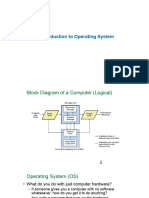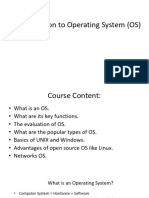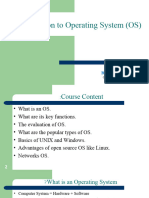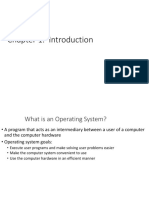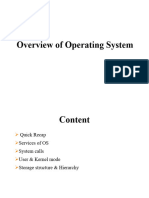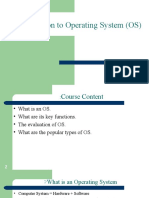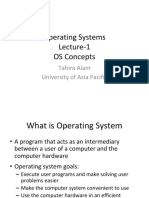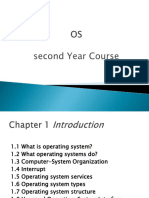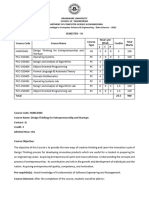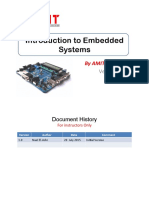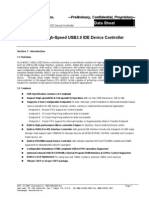0% found this document useful (0 votes)
36 views28 pagesOperating System Lecture1
The document discusses operating system concepts including hardware protection using mechanisms like dual mode operation, I/O protection, memory protection using base and limit registers, and CPU protection using scheduling and timers. It also covers OS components, services, system calls, and structures like simple and layered approaches.
Uploaded by
janishab1704Copyright
© © All Rights Reserved
We take content rights seriously. If you suspect this is your content, claim it here.
Available Formats
Download as PPTX, PDF, TXT or read online on Scribd
0% found this document useful (0 votes)
36 views28 pagesOperating System Lecture1
The document discusses operating system concepts including hardware protection using mechanisms like dual mode operation, I/O protection, memory protection using base and limit registers, and CPU protection using scheduling and timers. It also covers OS components, services, system calls, and structures like simple and layered approaches.
Uploaded by
janishab1704Copyright
© © All Rights Reserved
We take content rights seriously. If you suspect this is your content, claim it here.
Available Formats
Download as PPTX, PDF, TXT or read online on Scribd
/ 28






